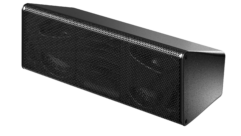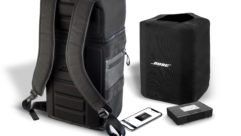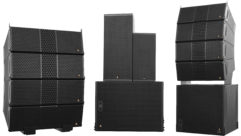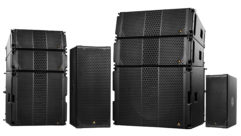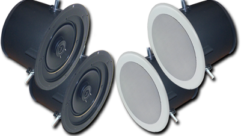Covering that last big acoustic step in delivering sound from power amps to a large venue is the most challenging link in the sound system chain. To get it to each listener with sufficient level, clarity and with low distortion has always been the object of intense research, refined technique, stiff competition and marketing hype. Some fairly ingenious acoustic systems have been developed to enable system designers and sound operators to direct the most sound to the audience and the least to the venues’ walls and ceilings. Stacking angles, waveguide settings and rigging points all play a part and the line array systems noted here illustrate some of the best current technology used to reach all of those goals.
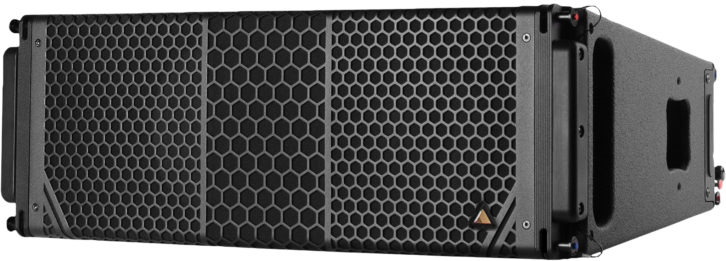 The CS10 two-way full-range loudspeaker from Adamson Systems Engineering has on-board DSP and amplification, two etherCON connections and an in and through powerCON TRUE1 connection as well as XLR input and output connectors. The unit has the ability to daisy chain networked audio between multiple sources and all of this capability is set up through Adamson’s proprietary CS software. Inside it has two 10in. Kevlar neodymium transducers and a 4in. compression driver to produce coverage angles of 110 degrees horizontally and 10 degrees vertically with a frequency range of 60Hz to 18kHz, all driven by a two-channel Class-D amp with 4000W total output. The birch plywood cabinet is strengthened with aircraft grade steel and aluminum. The Slidelock Rigging System makes setup quick and safe.
The CS10 two-way full-range loudspeaker from Adamson Systems Engineering has on-board DSP and amplification, two etherCON connections and an in and through powerCON TRUE1 connection as well as XLR input and output connectors. The unit has the ability to daisy chain networked audio between multiple sources and all of this capability is set up through Adamson’s proprietary CS software. Inside it has two 10in. Kevlar neodymium transducers and a 4in. compression driver to produce coverage angles of 110 degrees horizontally and 10 degrees vertically with a frequency range of 60Hz to 18kHz, all driven by a two-channel Class-D amp with 4000W total output. The birch plywood cabinet is strengthened with aircraft grade steel and aluminum. The Slidelock Rigging System makes setup quick and safe.
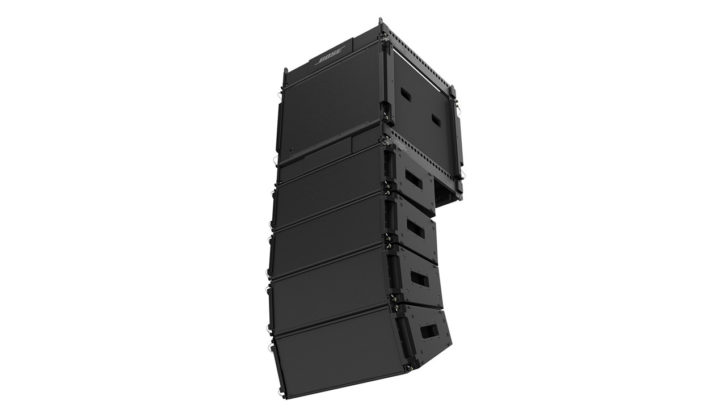 Three-pin “quick pin” rigging for up to 24 modules and field changeable 70 and 100-degree waveguides allow the Bose Professional ShowMatch DeltaQ SM20 two-way line array modules to use both symmetrical and asymmetrical coverage patterns. Bose EMB2S compression drivers and two 8in. neodymium high-power woofers get the output to 145dB with more HF response. There are also removable side rigging handles for added versatility. The frequency response is 69 Hz to 16 kHz (±3dB) and the Baltic birch plywood enclosures are durable enough for touring as well as permanent installation. Grills are 16-gauge perforated steel with a powder-coated black finish.
Three-pin “quick pin” rigging for up to 24 modules and field changeable 70 and 100-degree waveguides allow the Bose Professional ShowMatch DeltaQ SM20 two-way line array modules to use both symmetrical and asymmetrical coverage patterns. Bose EMB2S compression drivers and two 8in. neodymium high-power woofers get the output to 145dB with more HF response. There are also removable side rigging handles for added versatility. The frequency response is 69 Hz to 16 kHz (±3dB) and the Baltic birch plywood enclosures are durable enough for touring as well as permanent installation. Grills are 16-gauge perforated steel with a powder-coated black finish.
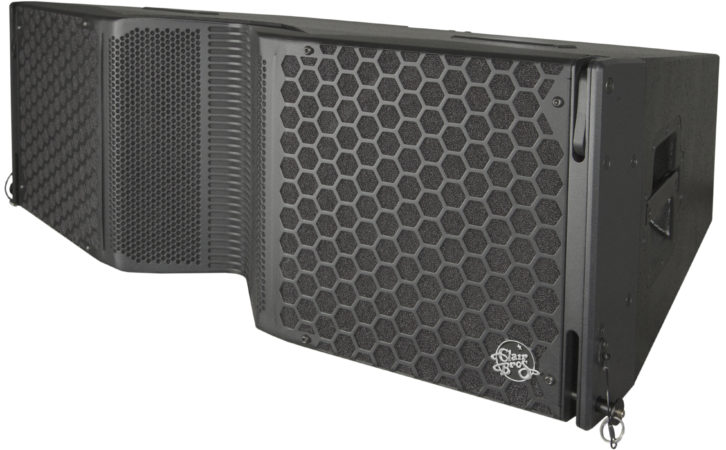 Available in various options, the C12 from Clair Brothers is a three-way array unit requiring at least two amp channels. The mid/high portion is coupled through an internal passive crossover network and it has 10 degrees vertical coverage while providing a variable horizontal coverage pattern. The horizontal angle can be adjusted in 10-degree increments or it can be fitted with Clair TrueFit custom waveguides. The C12i model is for permanent installations while the C12M is the mobile model. Both are constructed of Baltic birch plywood and are equipped with integrated bimodal rigging. The rear rigging allows the cabinet to be tilted between zero and 10 degrees in various increments.
Available in various options, the C12 from Clair Brothers is a three-way array unit requiring at least two amp channels. The mid/high portion is coupled through an internal passive crossover network and it has 10 degrees vertical coverage while providing a variable horizontal coverage pattern. The horizontal angle can be adjusted in 10-degree increments or it can be fitted with Clair TrueFit custom waveguides. The C12i model is for permanent installations while the C12M is the mobile model. Both are constructed of Baltic birch plywood and are equipped with integrated bimodal rigging. The rear rigging allows the cabinet to be tilted between zero and 10 degrees in various increments.
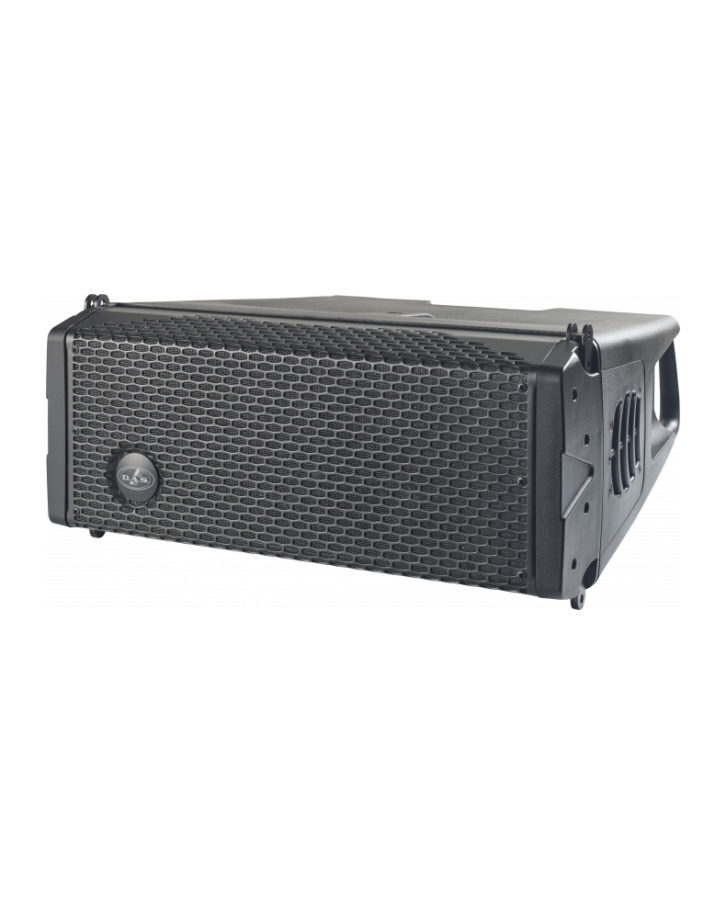 D.A.S. Audio made the EVENT-26A as the solution for big sound in a very small enclosure. This powered line array has a class D amplifier that can use its dual voltage mains for operation anywhere. The unit’s sophisticated 24-bit DSP can be set up and controlled through the onboard LCD screen for functions such as crossover, EQ, delay, and limiter functions. The polypropylene cabinet provides a lightweight structure suited for small to medium installations or easy carrying and road assembly. The 800W peak power amp drives two 6.5in. speakers and an M-60 compression driver. Up to 16 units can be stacked and the FSS (Fast Set Splay) rigging system allows angle selection while stacked on dollies.
D.A.S. Audio made the EVENT-26A as the solution for big sound in a very small enclosure. This powered line array has a class D amplifier that can use its dual voltage mains for operation anywhere. The unit’s sophisticated 24-bit DSP can be set up and controlled through the onboard LCD screen for functions such as crossover, EQ, delay, and limiter functions. The polypropylene cabinet provides a lightweight structure suited for small to medium installations or easy carrying and road assembly. The 800W peak power amp drives two 6.5in. speakers and an M-60 compression driver. Up to 16 units can be stacked and the FSS (Fast Set Splay) rigging system allows angle selection while stacked on dollies.
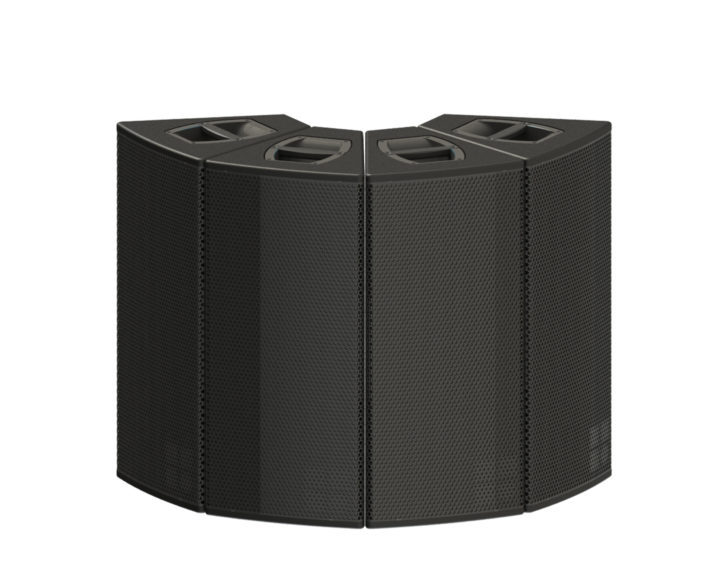 Introduced at ISE 2020, the KSLi System from d&b audiotechnik includes the KSLi8 speaker with 80-degree horizontal dispersion and the KSLi12 with 120-degree dispersion. They are matched with the KSLi-SUB/KSLi-GSUB subwoofers and the 40D installation amplifier. Each speaker enclosure has two 10in. drivers facing the front and two 8in. ones projecting to the sides. The 40D has four channels, each with 2000W maximum output and it features a color TFT touchscreen along with 12 configurable GPIOs. The subs can be flown in the array (KLSi-SUB) or ground stacked (KLSi-GSUB). These combinations can be used to meet the demands of a wide range of venue installations.
Introduced at ISE 2020, the KSLi System from d&b audiotechnik includes the KSLi8 speaker with 80-degree horizontal dispersion and the KSLi12 with 120-degree dispersion. They are matched with the KSLi-SUB/KSLi-GSUB subwoofers and the 40D installation amplifier. Each speaker enclosure has two 10in. drivers facing the front and two 8in. ones projecting to the sides. The 40D has four channels, each with 2000W maximum output and it features a color TFT touchscreen along with 12 configurable GPIOs. The subs can be flown in the array (KLSi-SUB) or ground stacked (KLSi-GSUB). These combinations can be used to meet the demands of a wide range of venue installations.
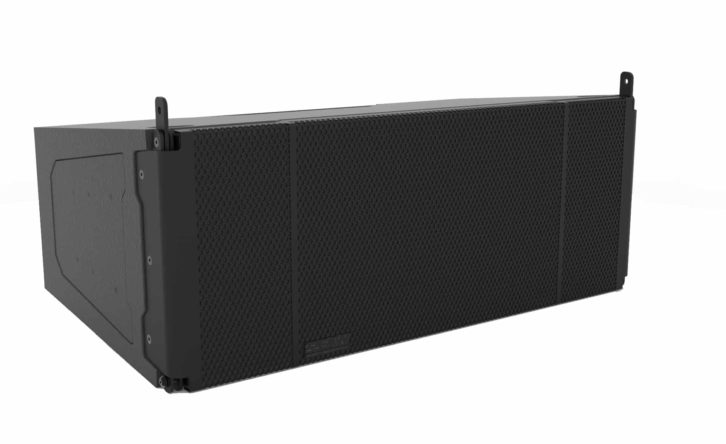 EAW’s new KF810P array module has a very neat look with concealed three-point rigging and hidden wiring. It is available in black or white and there is also a weather-rated permanent installation version. The 3-way system includes twin 3in. HF compression drivers, four 5in. mid-frequency speakers and dual 10in. LF drivers. Pattern control extends down to 250Hz and there is an option for 80 or 100-degree dispersion. The unit’s peak SPL is 145dB operating with an 8-ohm impedance. The EAW Resolution software is used to calculate the best placement for a specific venue and it can predict direct SPL levels and frequency response at any spot in the house.
EAW’s new KF810P array module has a very neat look with concealed three-point rigging and hidden wiring. It is available in black or white and there is also a weather-rated permanent installation version. The 3-way system includes twin 3in. HF compression drivers, four 5in. mid-frequency speakers and dual 10in. LF drivers. Pattern control extends down to 250Hz and there is an option for 80 or 100-degree dispersion. The unit’s peak SPL is 145dB operating with an 8-ohm impedance. The EAW Resolution software is used to calculate the best placement for a specific venue and it can predict direct SPL levels and frequency response at any spot in the house.
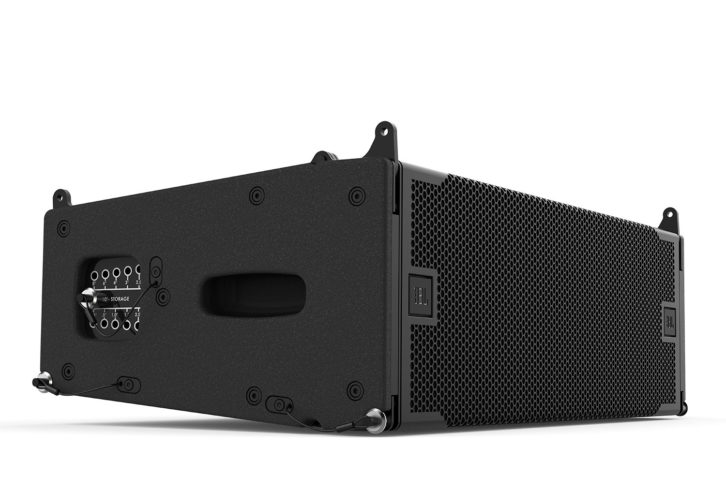 Difficult coverage in small to medium sized rooms is the job of the JBL VTX A8 with its 110-degree horizontal coverage and proprietary double-flared low-frequency ports. The two 8in. woofers, four 3.5in. midrange drivers and two 2in. HF drivers combine for a frequency range of 49Hz to 19kHz. Of the two biamped sections, the LF system handles up to 600W continuous power while the MF/HF section can take 390W. The full face enclose grille provides IP55 protection and the JBL system control and prediction software aids effective configuration and placement. The VTX A8 AF array frame is used to hang up to 24 VTX A8 enclosures.
Difficult coverage in small to medium sized rooms is the job of the JBL VTX A8 with its 110-degree horizontal coverage and proprietary double-flared low-frequency ports. The two 8in. woofers, four 3.5in. midrange drivers and two 2in. HF drivers combine for a frequency range of 49Hz to 19kHz. Of the two biamped sections, the LF system handles up to 600W continuous power while the MF/HF section can take 390W. The full face enclose grille provides IP55 protection and the JBL system control and prediction software aids effective configuration and placement. The VTX A8 AF array frame is used to hang up to 24 VTX A8 enclosures.
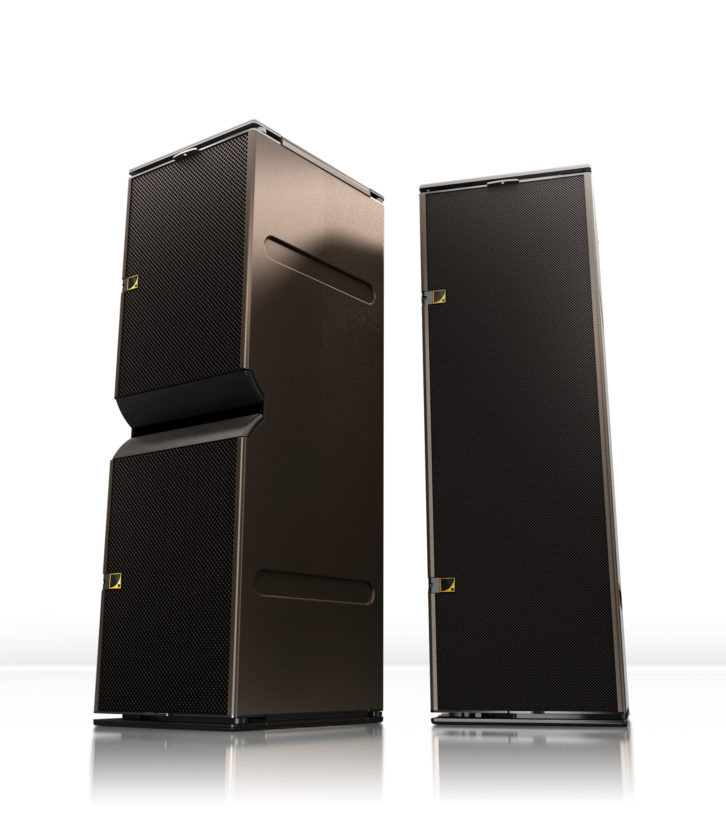 The idea behind the L-Acoustics K1 array element is clear, long range punch for very large venues such as stadiums. Mounted in the bass reflex enclosure are two 15in. woofers. These are augmented by four 6.5in. high-efficiency direct radiating speakers, and three 3in. diaphragm compression drivers coupled to individual DOSC waveguides. This 3-way active design has all sections operating at 8-ohm impedance and enclose in a Baltic birch cabinet with 4 rigging points. The whole unit exhibits a frequency range of 35Hz to 20kHz but the low end can be extended by adding the dedicated K1-SB extension or the KS28 subwoofer. Adjustable inter-element angles can be set up to 5 degrees.
The idea behind the L-Acoustics K1 array element is clear, long range punch for very large venues such as stadiums. Mounted in the bass reflex enclosure are two 15in. woofers. These are augmented by four 6.5in. high-efficiency direct radiating speakers, and three 3in. diaphragm compression drivers coupled to individual DOSC waveguides. This 3-way active design has all sections operating at 8-ohm impedance and enclose in a Baltic birch cabinet with 4 rigging points. The whole unit exhibits a frequency range of 35Hz to 20kHz but the low end can be extended by adding the dedicated K1-SB extension or the KS28 subwoofer. Adjustable inter-element angles can be set up to 5 degrees.
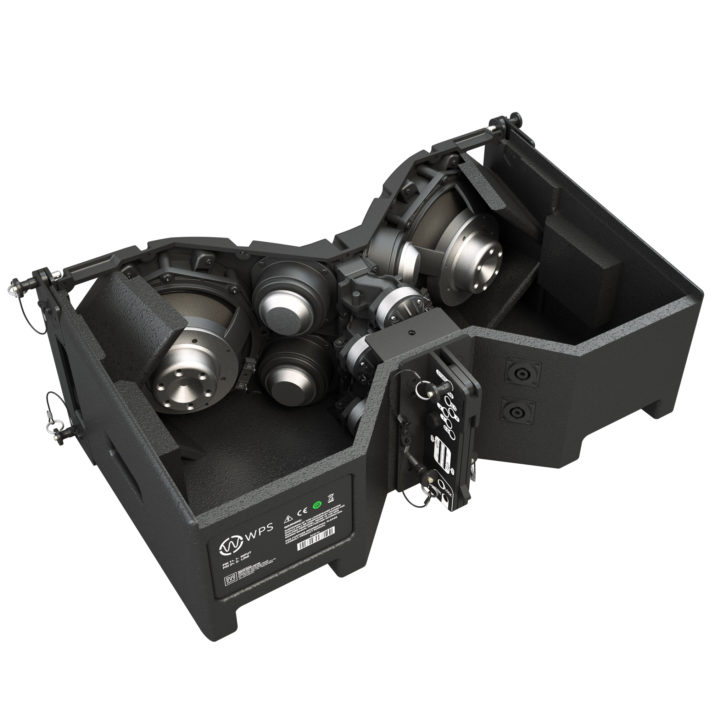 The WPS optimized line array from Martin Audio is a passive 3-way element using external, dedicated multi-channel Class D amplification and it provides scalable resolution. The integral 3-point rigging system allows up to 16 units to be used in each array and there are built-in side and rear handles on each enclosure. Each one houses two 8in. LF drivers, four 4in. midrange drivers and four 1in. exit compression drivers loaded by a moulded HF horn. This arrangement produces a combined frequency response of 70Hz to 18kHz (±3dB) and a maximum SPL of 130dB peak. Dispersion is 100 degrees horizontal (-6dB) and 10 degrees vertical. Protecting the components from the front is a black HEX perorated steel grille.
The WPS optimized line array from Martin Audio is a passive 3-way element using external, dedicated multi-channel Class D amplification and it provides scalable resolution. The integral 3-point rigging system allows up to 16 units to be used in each array and there are built-in side and rear handles on each enclosure. Each one houses two 8in. LF drivers, four 4in. midrange drivers and four 1in. exit compression drivers loaded by a moulded HF horn. This arrangement produces a combined frequency response of 70Hz to 18kHz (±3dB) and a maximum SPL of 130dB peak. Dispersion is 100 degrees horizontal (-6dB) and 10 degrees vertical. Protecting the components from the front is a black HEX perorated steel grille.
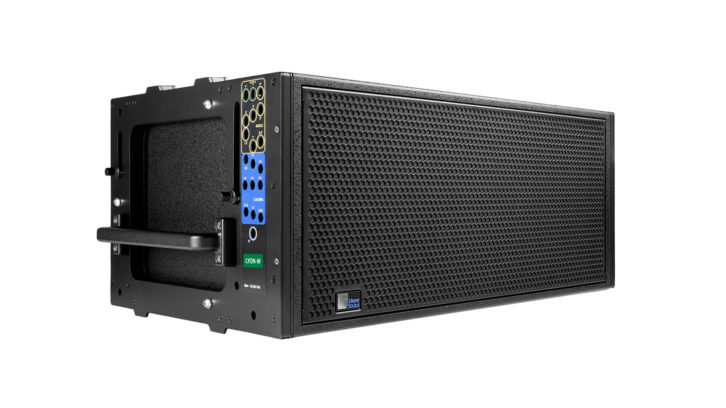 In the self-powered realm, Meyer Sound’s answer to maximum power in compact size is the LYON linear array loudspeaker with patent pending rigging system and compatibility with Meyer’s Mapp System Design Tool. The HF section consists of two proprietary compression drivers coupled to a constant-directivity horn through a patented REM manifold while the lows are handled by two long-excursion cone drivers suited for high continuous output. The onboard power amp runs on AC power from 85–134 volts at 50–60 Hz with TruPower limiting providing protection. For quick and easy maintenance a single, field-replaceable module located on the rear of the cabinet houses the amplifier, control electronics, and power supply.
In the self-powered realm, Meyer Sound’s answer to maximum power in compact size is the LYON linear array loudspeaker with patent pending rigging system and compatibility with Meyer’s Mapp System Design Tool. The HF section consists of two proprietary compression drivers coupled to a constant-directivity horn through a patented REM manifold while the lows are handled by two long-excursion cone drivers suited for high continuous output. The onboard power amp runs on AC power from 85–134 volts at 50–60 Hz with TruPower limiting providing protection. For quick and easy maintenance a single, field-replaceable module located on the rear of the cabinet houses the amplifier, control electronics, and power supply.
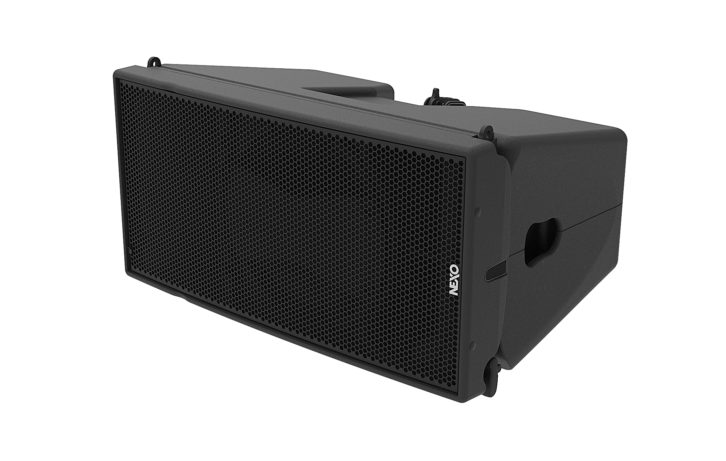 The NEXO GEO M12 also provides high power in a small footprint with its 12in. neodymium LF driver and 1.4in. titanium diaphragm tweeter. This versatile unit can be assembled into a range of configurations to meet the needs of specific acoustic environments. The intuitive drag and drop functionality of the NS-1 configuration and simulation software makes it easy to set up. The Hyperbolic Reflective Wavesource (HRW) provides perfect wavesource coupling without destructive interference. Each enclosure is made of a urethane co-polymer material and honeycomb structure to give it rigidity and light weight. This model comes in two versions, the GEO M1210 with 10 degrees of vertical dispersion and the GEO M1220 for 20 degrees. Horizontal directivity can easily be changed from 80 degrees to 120 degrees.
The NEXO GEO M12 also provides high power in a small footprint with its 12in. neodymium LF driver and 1.4in. titanium diaphragm tweeter. This versatile unit can be assembled into a range of configurations to meet the needs of specific acoustic environments. The intuitive drag and drop functionality of the NS-1 configuration and simulation software makes it easy to set up. The Hyperbolic Reflective Wavesource (HRW) provides perfect wavesource coupling without destructive interference. Each enclosure is made of a urethane co-polymer material and honeycomb structure to give it rigidity and light weight. This model comes in two versions, the GEO M1210 with 10 degrees of vertical dispersion and the GEO M1220 for 20 degrees. Horizontal directivity can easily be changed from 80 degrees to 120 degrees.
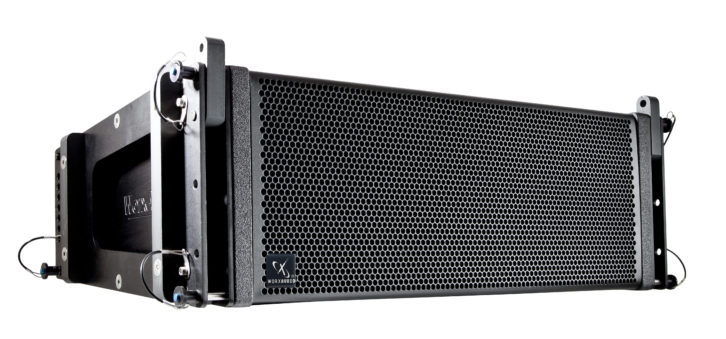 The V8 Presonus/WorxAudio two-way, high efficiency line array loudspeaker uses its compact size to offer better sightlines in any performance venue whether it is temporarily or permanently installed. This model couples a large format 3in. voice coil compression driver to a stabilized proprietary flatWave former to allow very controlled coverage. Two 8in. cone speakers provide high energy bass. The cabinet is made of multi-ply Baltic birch plywood with a multi-layered catalyzed Polyurea finish to endure heavy mobile use and the perforated, powder coated steel grill protects the front end. The V8i install is available in a black or white exterior. The whole unit produces a 65 Hz to 18 kHz frequency range and 138dB maximum SPL.
The V8 Presonus/WorxAudio two-way, high efficiency line array loudspeaker uses its compact size to offer better sightlines in any performance venue whether it is temporarily or permanently installed. This model couples a large format 3in. voice coil compression driver to a stabilized proprietary flatWave former to allow very controlled coverage. Two 8in. cone speakers provide high energy bass. The cabinet is made of multi-ply Baltic birch plywood with a multi-layered catalyzed Polyurea finish to endure heavy mobile use and the perforated, powder coated steel grill protects the front end. The V8i install is available in a black or white exterior. The whole unit produces a 65 Hz to 18 kHz frequency range and 138dB maximum SPL.
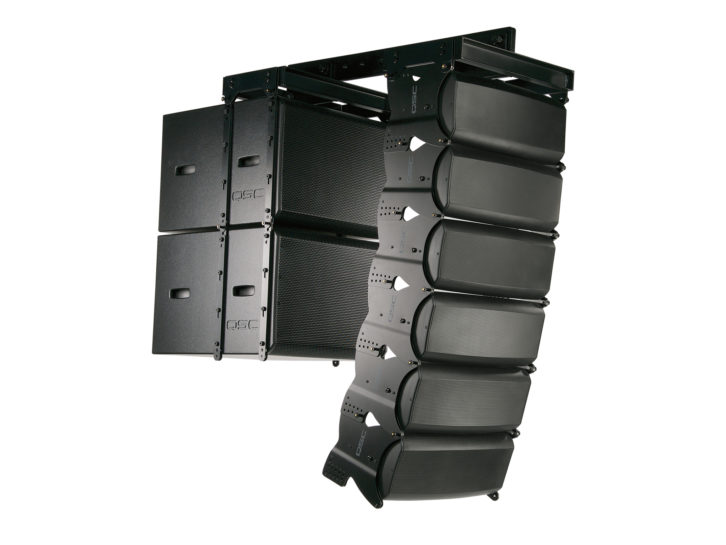 The WL2082i installation line array from QSC is a 2½-way, biamp or triamp system with a 140-degree coverage pattern and an overall frequency range of 80 Hz – 20 kHz (±3dB). Its twin 8in. woofers handle 200W power and the dual 1in. exit, 1.75in titanium diaphragm HF transducers fill out the high end coverage with 126 dB continuous SPL capability. The ported, elliptical/trapezoidal cabinet is made of high impact polystyrene with UV protectant and it is available in black or white. The perforated, formed aluminum grille protects the elements from the front and the integral, side plate adjustable rigging system allows the vertical dispersion to be adjusted in one-degree increments from 0 to 10 degrees.
The WL2082i installation line array from QSC is a 2½-way, biamp or triamp system with a 140-degree coverage pattern and an overall frequency range of 80 Hz – 20 kHz (±3dB). Its twin 8in. woofers handle 200W power and the dual 1in. exit, 1.75in titanium diaphragm HF transducers fill out the high end coverage with 126 dB continuous SPL capability. The ported, elliptical/trapezoidal cabinet is made of high impact polystyrene with UV protectant and it is available in black or white. The perforated, formed aluminum grille protects the elements from the front and the integral, side plate adjustable rigging system allows the vertical dispersion to be adjusted in one-degree increments from 0 to 10 degrees.
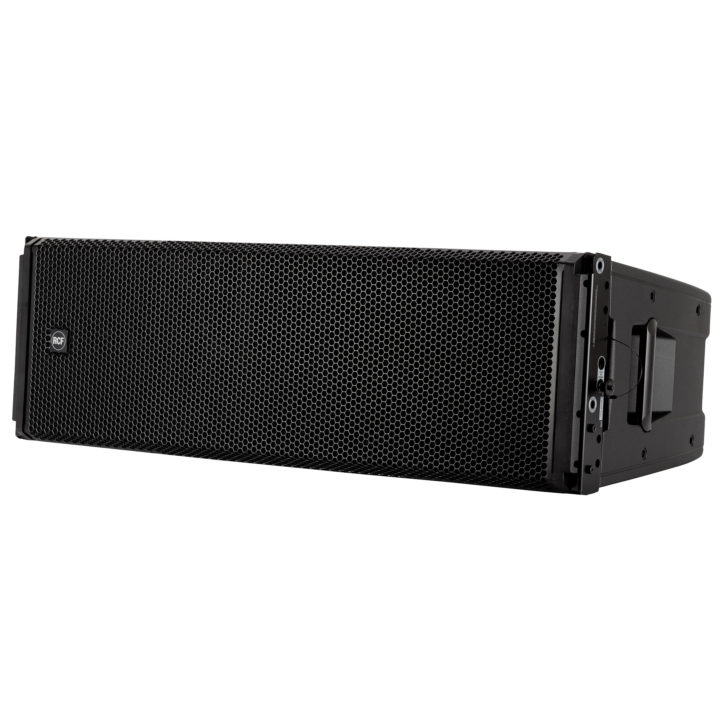 RCF has a very heavy duty self-powered solution for large venues in the HDL 50-A 4K active 3-way line array module. With 8000W (peak) power from four Class-D onboard amps, the unit can produce SPL up to 143 dB and its 90 x 10-degree coverage pattern is steered by the 4PATH waveguide. Features include 48 kHz, 32 bit DSP processing for control of volume, bypass, delay, presets and advanced functions, two 12in. neodymium woofers and two 3in. titanium dome neodymium compression drivers for 40 Hz to 20000 Hz frequency range. Each cabinet has two rear and two side handles and a steel grille. The special FiRPHASE filters provide coherent sound distribution without phase distortion.
RCF has a very heavy duty self-powered solution for large venues in the HDL 50-A 4K active 3-way line array module. With 8000W (peak) power from four Class-D onboard amps, the unit can produce SPL up to 143 dB and its 90 x 10-degree coverage pattern is steered by the 4PATH waveguide. Features include 48 kHz, 32 bit DSP processing for control of volume, bypass, delay, presets and advanced functions, two 12in. neodymium woofers and two 3in. titanium dome neodymium compression drivers for 40 Hz to 20000 Hz frequency range. Each cabinet has two rear and two side handles and a steel grille. The special FiRPHASE filters provide coherent sound distribution without phase distortion.
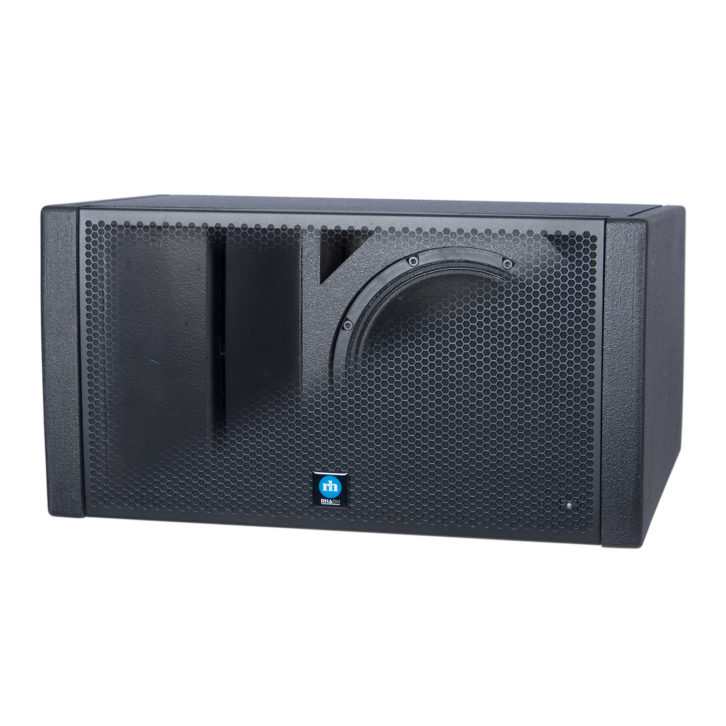 The Renkus-Heinz VARIA VA/VX101-22 modular point source line arrays can be flown in a number of configurations to tailor the sound dispersion for its environment. The VA variant is self-powered and the VX line uses external amplification. They are available in 7.5, 15 and 22.5 degree array capable enclosures and each can have one of several waveguides that include 60, 90 and 120 degree patterns. These enclosures can be used with matching VX/VA15S 15in. subwoofers flown alongside, behind, or at the top of the array. EASE and EASE Focus II simulation software provide an accurate simulation and prediction of the sound patterns produced. Power handling capacity is 400W on the LF section and 80 watts for the HF.
The Renkus-Heinz VARIA VA/VX101-22 modular point source line arrays can be flown in a number of configurations to tailor the sound dispersion for its environment. The VA variant is self-powered and the VX line uses external amplification. They are available in 7.5, 15 and 22.5 degree array capable enclosures and each can have one of several waveguides that include 60, 90 and 120 degree patterns. These enclosures can be used with matching VX/VA15S 15in. subwoofers flown alongside, behind, or at the top of the array. EASE and EASE Focus II simulation software provide an accurate simulation and prediction of the sound patterns produced. Power handling capacity is 400W on the LF section and 80 watts for the HF.
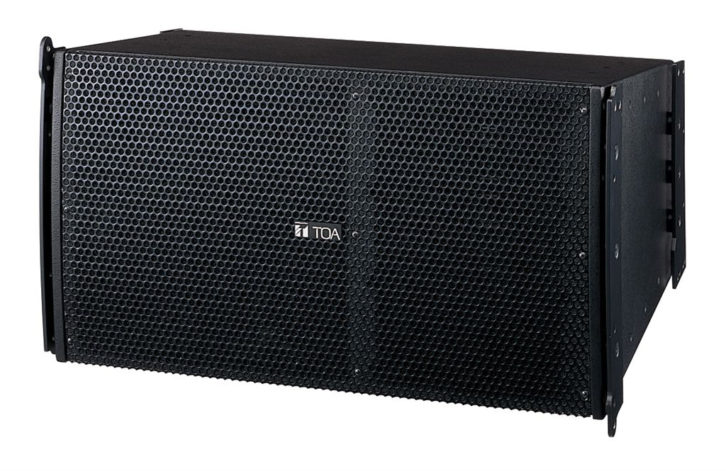 TOA Electronics designed the SR-A12S as a two-way line array speaker for short throw applications. Its multi-amplifier drive system is intended to be used in conjunction with the optional DP-0206 Digital Processor, D-901 Digital Mixer or D-2000 Digital Mixing System. Each unit contains a 12in. LF unit and a high-frequency horn attached to two compression drivers. There are two speaker configurations, one of which is made with a 5 degree taper for longer throw and another has a 15 degree taper that is optimized for shorter throw. The low frequency system handles up to 450W continuous program power while the HF section puts out up to 180W continuous program.
TOA Electronics designed the SR-A12S as a two-way line array speaker for short throw applications. Its multi-amplifier drive system is intended to be used in conjunction with the optional DP-0206 Digital Processor, D-901 Digital Mixer or D-2000 Digital Mixing System. Each unit contains a 12in. LF unit and a high-frequency horn attached to two compression drivers. There are two speaker configurations, one of which is made with a 5 degree taper for longer throw and another has a 15 degree taper that is optimized for shorter throw. The low frequency system handles up to 450W continuous program power while the HF section puts out up to 180W continuous program.
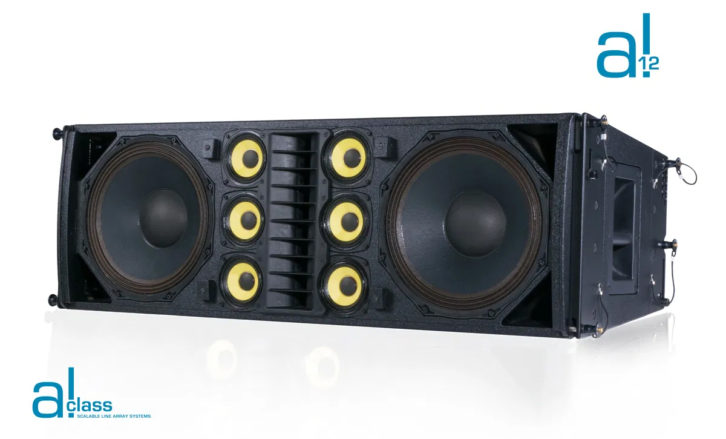 Among the al class of line array systems from VUE audiotechnik the al-12 is their answer to the big project requirements. This three-way design uses two 3in. diameter Beryllium HF elements, six 4in. Kevlar MF cone drivers with neodymium magnets and a pair of 12in. LF cones, all working on 8-ohm impedance. The four-point rigging system allows a wide variety mounting angles and the recessed side and rear handles make it easy to maneuver the multi-ply birch hardwood cabinets. The Dura-Coat LX synthetic resin chemical coating provides surface protection. The al-12 has a frequency response of 62 Hz to 19 kHz (±2.5dB) and maximum SPL of 144 dB.
Among the al class of line array systems from VUE audiotechnik the al-12 is their answer to the big project requirements. This three-way design uses two 3in. diameter Beryllium HF elements, six 4in. Kevlar MF cone drivers with neodymium magnets and a pair of 12in. LF cones, all working on 8-ohm impedance. The four-point rigging system allows a wide variety mounting angles and the recessed side and rear handles make it easy to maneuver the multi-ply birch hardwood cabinets. The Dura-Coat LX synthetic resin chemical coating provides surface protection. The al-12 has a frequency response of 62 Hz to 19 kHz (±2.5dB) and maximum SPL of 144 dB.
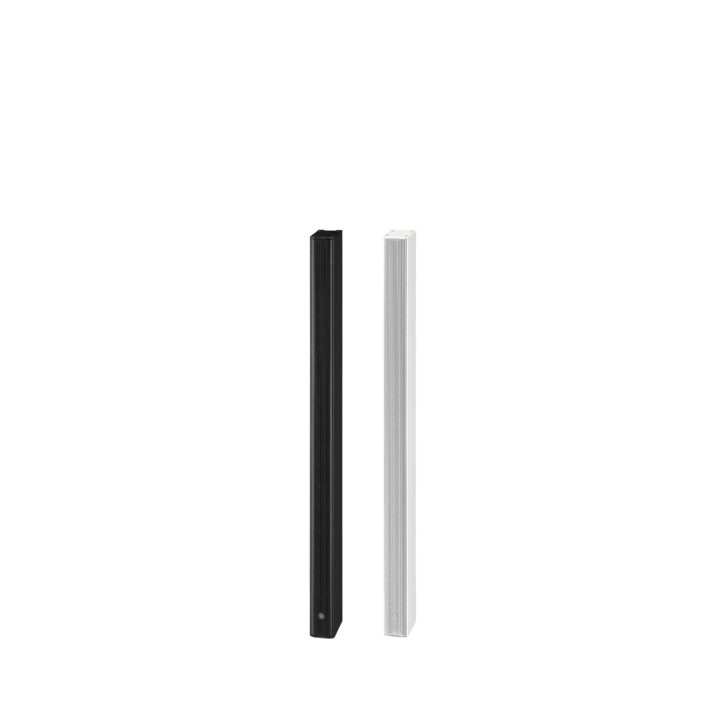 Yamaha uses an interesting form factor for their VXL Series slim line arrays across all three models, the VXL1-8, VXL1-16 and the VXL1-24, all with 1.5 inch full range drivers. The enclosures are only 2.1in. wide with curved front grilles. In the middle of the product line, the VXL1-16 has 16 1.5in. drivers for 170-degree horizontal dispersion. Vertical dispersion is selectable as 20 or 40 degrees. Available in black or white, the enclosures can be painted to suit the specific room décor. Wall mounts are supplied and there is optional hardware for other mounting requirements.
Yamaha uses an interesting form factor for their VXL Series slim line arrays across all three models, the VXL1-8, VXL1-16 and the VXL1-24, all with 1.5 inch full range drivers. The enclosures are only 2.1in. wide with curved front grilles. In the middle of the product line, the VXL1-16 has 16 1.5in. drivers for 170-degree horizontal dispersion. Vertical dispersion is selectable as 20 or 40 degrees. Available in black or white, the enclosures can be painted to suit the specific room décor. Wall mounts are supplied and there is optional hardware for other mounting requirements.


